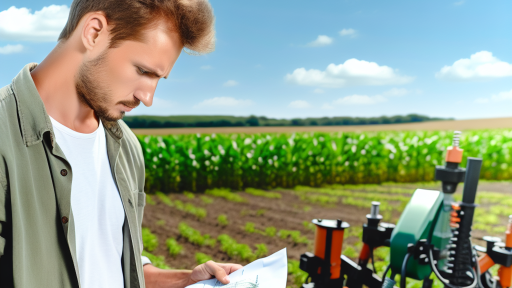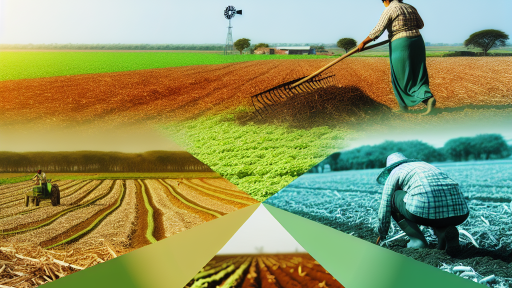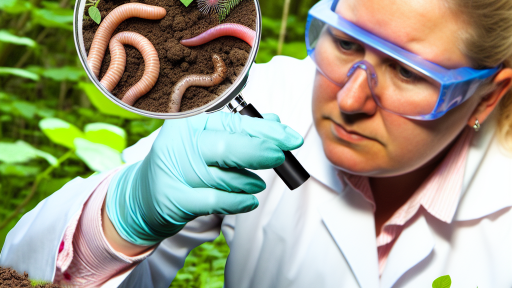Introduction to Farm Layouts and Their Importance in Water Management
Farm layouts significantly impact water management strategies.
Efficient design helps optimize water usage across various agricultural practices.
Farmers must consider layout to reduce water waste and enhance productivity.
A well-planned layout accommodates irrigation systems, crop placement, and water sources.
Understanding the Role of Farm Layouts
Farm layouts directly influence water flow across the land.
This ensures that crops receive adequate moisture.
Additionally, it reduces runoff and erosion risks.
Proper layouts can also lead to more effective drainage systems.
Factors Influencing Farm Layouts
Topography plays a critical role in determining farm layouts.
Soil type and composition also influence water retention capabilities.
Climate conditions dictate the best practices for water management.
Farmers should analyze each of these factors before deciding on a layout.
Best Practices for Designing Farm Layouts
Use contour farming techniques to follow the land’s natural curves.
Integrate water-efficient irrigation systems throughout the layout.
Establish buffer zones to protect water resources and prevent contamination.
Transform Your Agribusiness
Unlock your farm's potential with expert advice tailored to your needs. Get actionable steps that drive real results.
Get StartedConsider crop rotation and diversity to enhance soil health.
Technological Integration in Farm Designs
Modern technology facilitates smarter farm layouts.
Using drones can help assess water usage efficiently.
Smart irrigation systems adjust according to real-time weather data.
Data analytics provides insights into optimizing water management.
Assessing Water Resources
Understanding Water Availability
Farmers must evaluate their water sources carefully.
This evaluation includes rivers, lakes, and groundwater.
Additionally, understanding rainfall patterns is critical.
Farmers can utilize local meteorological data for insights.
It helps them plan for seasonal variations in water supply.
Evaluating Water Quality
Water quality significantly impacts crop health and yield.
Farmers should conduct regular testing of their water sources.
Test results reveal pH levels and contaminants present.
Water treatment methods can improve unsuitable water quality.
Improving quality ensures healthier plants and better yields.
Mapping Water Resources
Farmers should create maps of their water resources.
This includes locations of wells, rivers, and irrigation systems.
Visual representations help in optimal resource management.
Farmers can identify potential issues quickly using these maps.
As a result, they can act promptly to mitigate water scarcity.
Planning for Seasonal Changes
Crops need water consistently throughout their growing cycle.
Understanding seasonal changes is essential in water management.
Farmers can schedule irrigation based on weather forecasts.
Effective planning prevents both overuse and water shortages.
Showcase Your Farming Business
Publish your professional farming services profile on our blog for a one-time fee of $200 and reach a dedicated audience of farmers and agribusiness owners.
Publish Your ProfileAdaptive strategies enhance resilience to climate variability.
Implementing Conservation Practices
Farmers should implement water conservation strategies.
Utilizing drip irrigation systems minimizes water waste.
Planting drought-resistant crops also enhances water efficiency.
Furthermore, mulching retains soil moisture effectively.
All these practices contribute to sustainable water management.
Types of Farm Layouts
Traditional Designs
Traditional farm layouts prioritize simplicity and organization.
These designs focus on a central area with paddocks around it.
Farmers often use this approach for crop rotation and livestock grazing.
Moreover, these layouts benefit from natural water flow patterns.
Farmers can efficiently direct runoff to where it is needed.
However, traditional layouts may not maximize water use.
Modern Designs
Modern farm layouts emphasize precision and efficiency.
They incorporate advanced irrigation systems like drip or spray irrigation.
These systems help distribute water more evenly across crops.
Additionally, modern designs often include contour farming.
This technique reduces soil erosion and enhances water retention.
Indeed, the integration of technology yields better water management.
Comparative Analysis
When comparing traditional and modern designs, consider efficiency.
Modern layouts typically require less water for the same yield.
Moreover, they adapt better to climate variations.
Transitioning to modern methods provides long-term benefits.
Farmers can maximize productivity while conserving resources.
Key Considerations for Design
Farmers should assess their land’s specific characteristics.
Soil type, topography, and climate conditions play crucial roles.
Understanding these factors helps in selecting the best layout.
Furthermore, incorporating renewable resources can enhance sustainability.
Utilizing rainwater harvesting systems is one such example.
Lastly, ongoing monitoring can aid in optimizing water use.
Discover More: How Farmers Can Implement Carbon Sequestration
Zoning in Farm Layouts: Separating High and Low Water Usage Areas
Understanding Water Usage Zones
Farm layouts can benefit from clear water usage zones.
Identifying areas with high and low water requirements is crucial.
This separation allows farmers to optimize irrigation strategies.
High water usage areas typically include crops like rice.
Low water usage crops include cacti and certain grains.
By zoning, farmers can apply water efficiently.
Factors Influencing Water Needs
Multiple factors influence crop water needs.
Soil type plays a significant role in water retention.
Climate conditions also affect water evaporation rates.
Moreover, crop variety determines specific water requirements.
Showcase Your Farming Business
Publish your professional farming services profile on our blog for a one-time fee of $200 and reach a dedicated audience of farmers and agribusiness owners.
Publish Your ProfileIt’s essential to assess these factors during planning.
Benefits of Zoning
Zoning farm layouts leads to better resource management.
Farmers can reduce overall water usage effectively.
This approach often enhances crop health and yields.
Additionally, it minimizes the risk of overwatering.
As a result, soil degradation can be avoided.
Implementing Effective Zoning Strategies
To implement zoning, farmers should first analyze their fields.
Next, map out areas according to water usage requirements.
Farmers can use color codes for easy identification.
Furthermore, consider incorporating crop rotation methods.
This practice supports sustainable water usage.
Technology’s Role in Zoning
Modern technology aids in effective zoning practices.
Soil moisture sensors provide real-time data.
Drones can assist in surveying fields accurately.
These tools enhance decision-making regarding irrigation.
Consequently, farmers can maximize water efficiency.
Learn More: Crop Rotation To Boost Soil Health Naturally
Implementing Contour Farming and Terracing for Enhanced Water Retention
Overview of Contour Farming
Contour farming involves plowing and planting across the slope of the land.
This technique effectively reduces soil erosion and conserves water.
Farmers create furrows that follow the natural contours of the land.
Consequently, this method slows down water runoff during rains.
Ultimately, it enhances water infiltration into the soil.
Benefits of Contour Farming
Contour farming offers numerous agricultural benefits.
- It conserves soil moisture.
- It enhances crop yield by improving soil health.
- This practice helps minimize the impact of heavy rainfall.
Additionally, it promotes sustainable farming practices.
Understanding Terracing
Terracing involves creating stepped platforms on slopes.
This method significantly reduces soil erosion.
It allows farmers to cultivate on steep land.
Terraces slow water flow and promote deeper moisture retention.
As a result, it prevents water from running off too quickly.
Advantages of Terracing
Terracing presents various advantages for farmers.
- It optimizes land use on sloped terrains.
- It reduces water runoff and conserves soil.
- This method minimizes the risk of landslides.
Overall, terracing promotes more effective farming practices.
Implementing Both Techniques
Combining contour farming and terracing maximizes water retention.
This integrated approach enhances agricultural sustainability.
Farmers should assess their land for suitability.
Training and education in these methods are essential.
Moreover, local agricultural organizations can provide support.
Practical Steps for Implementation
To implement these methods, farmers can follow specific steps.
- Begin by conducting a land survey to identify contours.
- Design effective terraces based on slope and soil type.
- Utilize proper tools for excavation and planting.
- Regularly evaluate water flow and soil health.
With careful planning, farmers can significantly enhance water retention.
Delve into the Subject: Crop Rotation and Carbon Sequestration Strategies
The Role of Irrigation Systems in Farm Design
Understanding Irrigation Systems
Irrigation systems play a crucial role in agricultural success.
Showcase Your Farming Business
Publish your professional farming services profile on our blog for a one-time fee of $200 and reach a dedicated audience of farmers and agribusiness owners.
Publish Your ProfileThey directly impact crop yields and resource efficiency.
Farmers must choose the most suitable system for their needs.
Drip Irrigation Systems
Drip irrigation delivers water directly to the plant’s roots.
This method minimizes water waste significantly.
It allows farmers to control water application precisely.
Drip systems are ideal for arid regions where water is scarce.
Additionally, this system discourages weed growth by focusing water where needed.
Advantages of Drip Irrigation
- Efficient water use leads to lower costs.
- Reduced soil erosion compared to traditional methods.
- Improved nutrient management through targeted feeding.
Challenges of Drip Irrigation
- Installation can be costly and labor-intensive.
- Requires regular maintenance to prevent clogging.
- Not suitable for all crops or soil types.
Sprinkler Irrigation Systems
Sprinkler systems simulate natural rainfall on the crops.
They can cover large areas efficiently, making them versatile.
This method is suitable for various crop types and fields.
Farmers often prefer sprinklers for their ease of use.
Advantages of Sprinkler Irrigation
- Flexible in terms of coverage and crop types.
- Less equipment maintenance compared to drip systems.
- Can double as frost protection for certain crops.
Challenges of Sprinkler Irrigation
- Water efficiency is generally lower than drip systems.
- Wind can affect water distribution patterns.
- Requires adequate water pressure for effective operation.
Choosing the Right System
Selecting an irrigation system depends on several factors.
Farm size, crop type, and water availability are essential considerations.
A thorough cost analysis can guide farmers in their decision.
Ultimately, the chosen system should enhance productivity sustainably.
Discover More: Sustainable Farm Layout Techniques And Best Practices

Integrating Water Harvesting Techniques
Ponds for Water Harvesting
Ponds serve as effective reservoirs for collecting water.
They help in managing seasonal water surpluses efficiently.
Moreover, ponds support aquatic ecosystems while providing irrigation options.
Consider the size and location carefully to optimize usage.
Water Storage Tanks
Water storage tanks ensure a reliable supply of water.
These tanks can capture water during rainfall events.
Additionally, they can store water from drying methods, like dewatering.
Choose materials that resist corrosion and leakage for longevity.
Rainwater Collection Systems
Rainwater harvesting systems optimize precipitation capture.
Install gutters and downspouts to direct water into storage units.
Furthermore, filtration systems improve water quality for various uses.
These systems are typically low-maintenance and eco-friendly.
Increasing Efficiency with Rain Gardens
Rain gardens enhance water absorption into the ground.
They also filter pollutants from the water runoff.
Planting native species in these gardens encourages biodiversity.
Position rain gardens strategically to maximize their effectiveness.
Using Swales for Water Management
Swales are shallow channels designed to manage stormwater runoff.
They slow water flow, allowing it to infiltrate the soil.
This technique reduces erosion and increases ground moisture levels.
Add vegetation along swales to enhance filtration and habitat.
Combining Techniques for Optimal Results
Integrating multiple water harvesting techniques boosts efficiency.
Ponds, tanks, and rain gardens complement each other’s functionality.
This synergy helps maintain a sustainable farming ecosystem.
Moreover, diversifying your approach mitigates risks related to water shortages.
Showcase Your Farming Business
Publish your professional farming services profile on our blog for a one-time fee of $200 and reach a dedicated audience of farmers and agribusiness owners.
Publish Your ProfileMonitoring and Evaluation: Tools and Technologies for Water Use Optimization
Importance of Monitoring Water Use
Monitoring water use helps identify areas for improvement.
It enables better water resource management on farms.
Additionally, it aids in assessing crop needs accurately.
Farmers can track consumption patterns over time.
This data informs irrigation scheduling and planning.
Technologies for Water Monitoring
Various technologies assist in effective water monitoring.
Soil moisture sensors provide real-time data on soil conditions.
These sensors help farmers decide when to irrigate.
Weather stations collect data on rainfall and temperature.
Farmers use this information to optimize irrigation schedules.
Remote Sensing Technology
Remote sensing technology allows for larger area monitoring.
Drones equipped with sensors capture data on crop health.
This information helps assess water stress in plants.
Aerial imagery can identify zones that require more water.
Data Analysis Tools
Data analysis tools can turn raw data into actionable insights.
Farm management software integrates various monitoring tools.
It helps farmers visualize and analyze water use patterns.
Furthermore, predictive analytics can provide recommendations.
Mobile Applications
Several mobile apps assist farmers with water management.
These apps offer irrigation scheduling features.
They provide real-time alerts for weather changes.
Farmers can monitor their water use directly from their phones.
Evaluation Techniques
Evaluating water usage helps to assess program effectiveness.
Farmers can conduct water audits regularly.
These audits identify inefficiencies in existing systems.
Subsequently, farmers can make targeted improvements.
Reporting and Improvement
Reporting results of water use evaluations is critical.
Farmers can share findings with local agricultural extensions.
Improvement plans can be developed based on collective data.
This collaborative approach fosters community-wide enhancements.
Case Studies: Successful Farm Designs with Optimal Water Usage
Innovative Approaches to Water Management
Farmers worldwide are implementing innovative designs to enhance water use efficiency.
These designs prioritize sustainable techniques, minimizing waste and maximizing resources.
For instance, drip irrigation systems deliver water directly to the plant roots.
This method reduces evaporation and runoff, enhancing water conservation.
Integrating Natural Landscapes
Designing farms around existing natural landscapes promotes effective water management.
For example, contour farming uses the natural lay of the land to slow water runoff.
This method allows water to infiltrate the soil, reducing erosion and improving yield.
Farmers like Maria Gonzalez have successfully adopted this approach in her vineyard.
Implementing Water Harvesting Techniques
Rainwater harvesting is another successful strategy in optimal farm designs.
This technique captures and stores rainwater for irrigation purposes.
Showcase Your Farming Business
Publish your professional farming services profile on our blog for a one-time fee of $200 and reach a dedicated audience of farmers and agribusiness owners.
Publish Your ProfileSeveral farms in California have adopted this practice to combat drought conditions.
These systems reduce dependence on external water sources while ensuring crop sustainability.
Case Study: Green Valley Farm
Green Valley Farm in Oregon exemplifies optimal water use in agriculture.
The farm utilizes a combination of precision irrigation and crop rotation.
These practices enhance soil moisture retention and reduce water requirements.
As a result, the farm has seen a 30% reduction in water usage over five years.
Case Study: Eco-Friendly Orchard
Adam Johnson’s eco-friendly orchard employs integrated water management strategies.
He uses swales and rain gardens to manage water efficiently on his property.
These features capture runoff, allowing water to recharge the soil naturally.
Furthermore, this design increases biodiversity and supports local wildlife.
Tools and Technologies for Efficiency
Farmers are leveraging modern tools to monitor and optimize water usage.
Soil moisture sensors help determine the best times to irrigate crops.
These technologies ensure farmers apply the precise amount of water needed.
This approach limits water waste and maximizes crop health.
Community Efforts in Water Conservation
Community initiatives play a vital role in promoting sustainable practices.
Local governments are organizing workshops to educate farmers about water management.
These efforts aim to increase awareness and encourage participation in water conservation.
Collaboration within communities often leads to innovative solutions and shared resources.
Future Trends in Farm Layout Design: Sustainability and Water Conservation
Integrating Water-Saving Technologies
Farmers increasingly adopt water-saving technologies in their layouts.
Drip irrigation systems provide water directly to root zones.
This minimizes evaporation and runoff effectively.
Moreover, smart sensors monitor soil moisture levels continuously.
This technology enables precise irrigation scheduling.
Optimizing Crop Placement
Strategic crop placement enhances water efficiency significantly.
For instance, grouping plants with similar water needs reduces waste.
Furthermore, utilizing contour farming helps manage water flow.
This method takes advantage of the landscape to conserve moisture.
Utilizing Rainwater Harvesting
Rainwater harvesting systems are gaining popularity among farmers.
These systems collect and store rainwater for irrigation use.
Harvested water can greatly supplement traditional water sources.
As a result, farmers can reduce dependency on groundwater.
Adopting Crop Rotation Practices
Implementing crop rotation contributes to sustainable water use.
Diverse crops improve soil health and reduce erosion risks.
Healthy soil retains water more effectively than degraded soil.
Additionally, rotational practices minimize pest infestations.
Incorporating Agroforestry Techniques
Agroforestry combines agriculture with forestry principles.
This approach enhances biodiversity and soil moisture retention.
Trees provide shade, which reduces evaporation rates.
Furthermore, their roots help stabilize the soil structure.
Emphasizing Education and Community Engagement
Educating farmers about sustainable practices is crucial.
Showcase Your Farming Business
Publish your professional farming services profile on our blog for a one-time fee of $200 and reach a dedicated audience of farmers and agribusiness owners.
Publish Your ProfileWorkshops can empower them to implement conservation techniques.
Collaboration within communities strengthens water management efforts.
Sharing successes promotes innovation and best practices.
Additional Resources
Best Management Practices To Minimize Agricultural Phosphorus …




